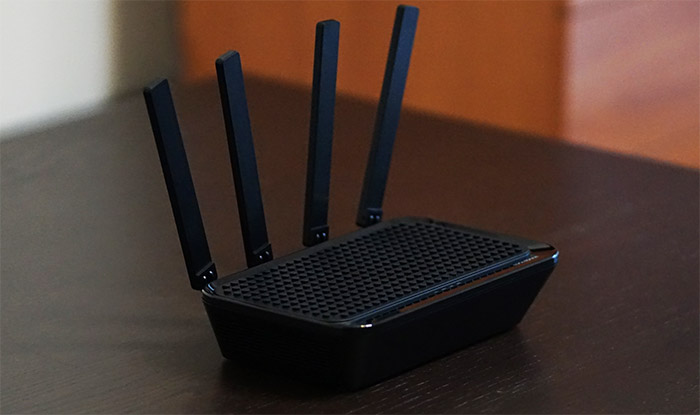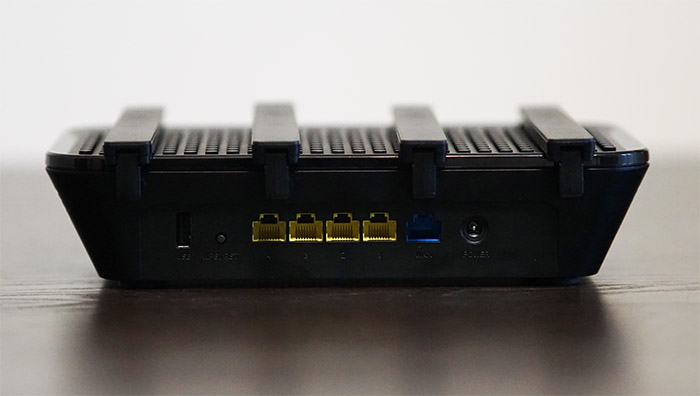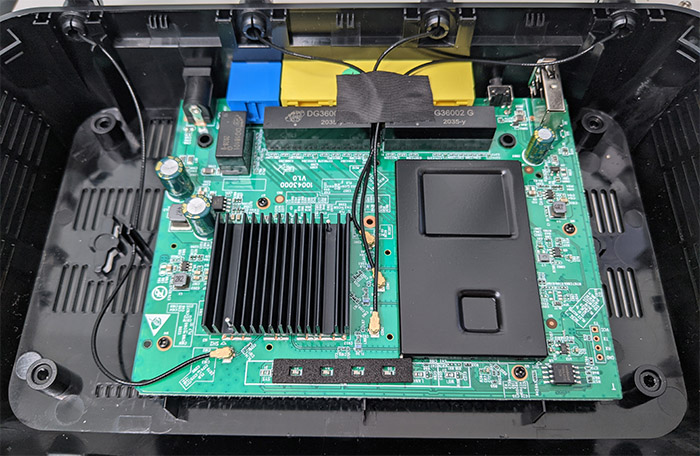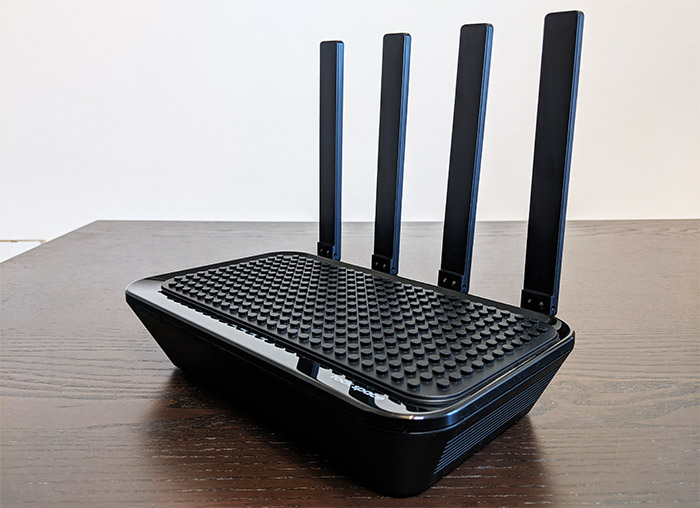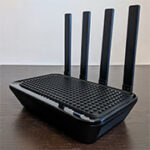The Rock Space AC2100 is currently the most ambitious WiFi 5 wireless router released by the Chinese manufacturer (that’s well known for its fairly reliable WiFi extenders) and yes, it’s a part of the last generation, but the best thing about it is that you get some cool technologies at a reasonable cost.
| Rock Space AC2100 | |
|---|---|
| Amazon.com | Check Product |
| Rockspace.com | Check Product |
As expected, after the WiFi 6 launched, it was only a matter of time until the now older gen WiFi networking devices would become far more accessible, but to build a balanced router, you need more than some decent hardware since the software is the element that can make or break this type of devices. Rock Space does have some experience in the networking department, so it would be interesting to see if they got both the user experience and the required features right.
I know that seeing the support for MU-MIMO (4×4) and BeamForming may not be as exciting as a few years back, but then again, we are dealing with a very inexpensive device, so every feature that will help improve the wireless performance is a welcomed one. The design of the router is also quite unique without being overly flashy (I’m looking at you, Asus) and that’s something quite rare in the consumer-based networking market. I have recently seen another manufacturer trying its hands at creating a good WiFi system for the first time (TaoTronics) and it did a fairly decent job, so let’s check out the Rock Space AC2100 and see if you should consider it for your home network.
Design and Build Quality
Before taking the router from the package, I had the idea that I should expect a device very similar to the Netgear R6220 which was very compact and a bit taller, but I was surprised to see that Rock Space has actually added some unique design elements. Of course, the case is made of plastic and it is mostly covered by a black matte finish, but the top section is a LEGO platform surrounded by a glossy band. And I don’t mean that it resembles a LEGO platform, you can actually add LEGO pieces and build whatever model you like. So yes, it can become a playground for your children (I assume that this is what the designers thought when building it – WiFi that brings the family together), but I don’t think the RSD0614 is rugged enough to survive being tossed around like a toy, so let’s keep it in a safe place. One other interesting design choice is in regards to the antennas which can sit flat on the top side of the router and you can also rotate them to almost 180 degrees, but you can’t push them backwards.
And this may seem a bit strange if you decide to mount the Rock Space AC2100 on the wall using the two holes on the bottom – I assume that the idea is to mount the device with the ports downwards, while the antennas would not take any more space than necessary. It’s clearly an ingenious system, but the antennas still are a bit flimsy and you can easily break them if you unknowingly try to push them backwards as you would normally do with any other router. Size-wise, the Rock Space AC2100 is relatively compact and, at its 9.0 x 5.9 x 2.0 inches (23.0 x 15.0 x 5.0 cm), it won’t take much space from your desk (in case you don’t want to mount it on the wall).
I have noticed that the manufacturer has added a few ventilation cut-outs on the left and right sides of the case, while the bottom is almost entirely covered by narrow holes to let the heat dissipate properly. As you will see in the next section, I have opened the case to check out the internal hardware and saw that there is a lot of free space inside which, along with the multitude of vent holes should ensure that the device remains at a proper temperature. Indeed, while it was functioning, the RSD0614 only got slightly warm at the top and a bit more on the bottom, but it showed no signs that it may overheat.
On the rear side, underneath the four antennas, there’s a USB 2.0 port (useful for both data transfer and for connecting a printer), followed by a WPS/RST button (short press to activate WPS, press and hold to reset the router to its default factory settings), four Gigabit Ethernet LAN ports, one Gigabit WAN port and a DC-In port. As soon as you connect the power adapter to the Rock Space AC2100, you will notice that four LEGO protrusions have LEDs underneath them.
Well, it’s easy to identify them considering that the manufacturer has printed some icons next to them: from the left, there’s the Sys LED (will slowly flash when the router is ready to be set up and will become solid when the router has been configured), the WAN LED (will become solid yellow after you connect the device to a modem), the LAN LED (there is one LED for all ports, so it’s going to light up when you attach any external device) and the WiFi LED (will become solid yellow after the SSID is being broadcasted).
Internal Hardware
Before opening up the case of the Rock Space AC2100, know that this most likely will mean that the warranty is going to be voided. If that’s alright with you, proceed by removing the four silicone pads that are glued to the bottom of the router and then remove the four screws that hold the top section connected to the bottom one. You will also need to use a prying tool to carefully detach the two sides since there are also some plastic hinges that we don’t want to get damaged. After that, you should be able to see the PCB with all its components, as well as the four antenna connectors.
I did immediately notice that there is a chip that has a heat sink permanently soldered to the board, so I couldn’t see which type it was which is why I decided to check out the FCC ID website since it has proven to be useful with other devices. Unfortunately, it seems that the Internal Photos didn’t go further that I did. The other components were easy to see, so we got a 28nm dual-core 1GHz Realtek RTL8197FHCPU (with a 500MHz co-processor), 16MB of flash storage memory from Winbond (25064JVS1Q 2039), a Realtek RTL8367RB K7K46E2 Ethernet switch controller, two DG36002 G 2035-y transformer modules for the LAN ports, a DG18101 G 2028-g transformer module for the WAN port and a Realtek RTL8197FH highly integrated 2T2R 802.11b/g/n WiSoC. That’s when I realized I have seen this configuration on another router, the Tenda AC19.
| Rock Space AC2100 | |
| CPU | Dual-core Realtek RTL8197FHCPU (1GHz) + 500MHz co-processor |
| RAM | 128MB |
| Storage | 16MB Winbond 25064JVS1Q |
| Switch | Realtek RTL8367RB |
| 5GHz Radio | Realtek RTL8814BR 802.11ac |
| 2.4GHz Radio | Realtek RTL8197FH 2T2R 802.11b/g/n |
Indeed, after checking out the FCC ID pages of the two routers, they do seem to be identical from the internal hardware point of view, so I can only assume that the hidden chip is none other than the Realtek RTL8814BR 802.11ac 4×4 and there are also 128MB of RAM. And it’s not really that surprising considering that the Rock Space AC1200 extender was also pretty much the same as Tenda A18. That being said, the Rock Space AC2100 features a maximum theoretical data transfer rate of 300 Mbps on the 2.4GHz band and a maximum theoretical data transfer rate of 1,733 Mbps on the 5GHz band.
Features and Performance
The Rock Space AC2100 is mostly using Wave 1 802.11ac features, such as the BeamForming and the support for up to 80MHz (channel bandwidth), but it does seem to have also added support for MU-MIMO 4×4:4 which is a Wave 2 feature. That being said, the MU-MIMO technology is going to be useful only if you have compatible clients since its role is to server multiple client devices at the same time, removing the necessity to compete for the bandwidth. When WiFi 5 was the latest gen, MU-MIMO didn’t really get that much attention, but with the release of the WiFi 6, a lot of previously underused technologies have gotten more attention, so a larger number of client devices do now support MU-MIMO (2×2 and above).
The BeamForming tech has the role of focusing the signal towards the connected devices (via WiFi), therefore keeping the interference at a low level and increasing the throughput; the problem is that similarly to the MU-MIMO, you still need compatible clients to use all the available wireless performance enhancing features. And these are the main highlighted features about the router, but it’s also worth mentioning the four 6dBi antennas.
Rock Space AC2100
-Pros
- Cool, original design
- The app is very user friendly and there is a web-based interface
- The 2.4GHz wireless performance is excellent
- If you mount the router on the wall, the antennas don't occupy any space
- MU-MIMO + BeamForming+
Cons
- The 5GHz network can become unstable
- The antennas seems a bit flimsy

Mark is a graduate in Computer Science, having gathered valuable experience over the years working in IT as a programmer. Mark is also the main tech writer for MBReviews.com, covering not only his passion, the networking devices, but also other cool electronic gadgets that you may find useful for your every day life.

